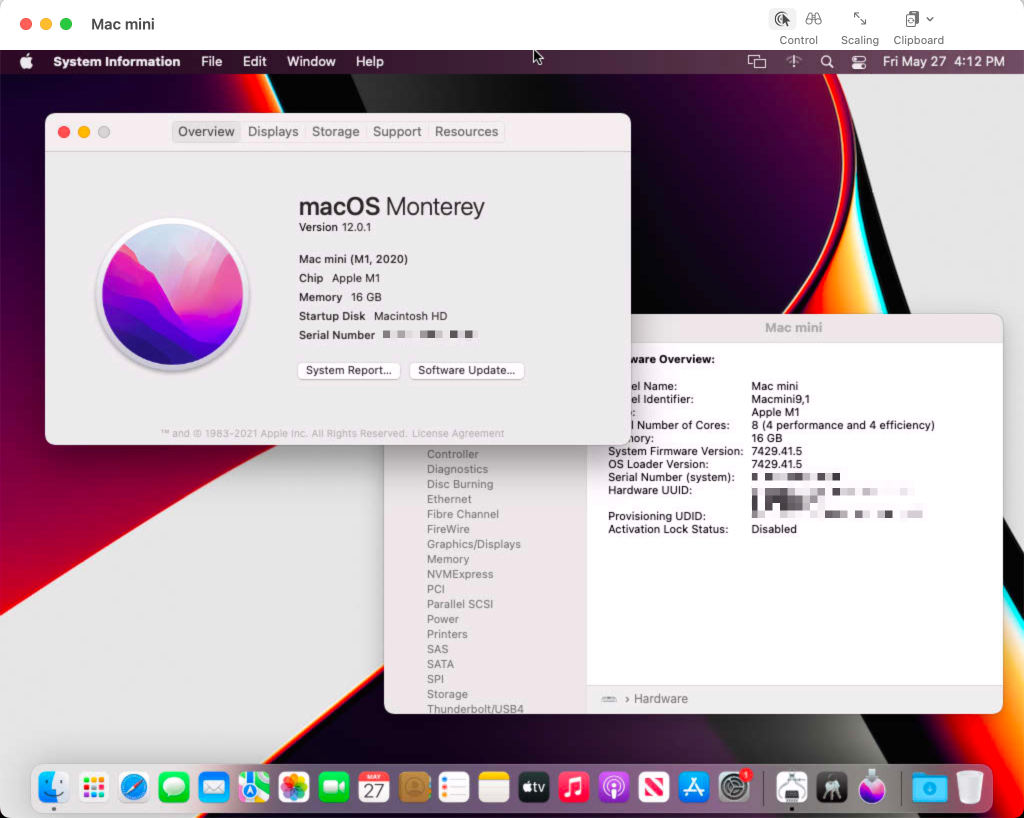AWS News Blog
New – Amazon EC2 M1 Mac Instances
|
|
Last year, during the re:Invent 2021 conference, I wrote a blog post to announce the preview of EC2 M1 Mac instances. I know many of you requested access to the preview, and we did our best but could not satisfy everybody. However, the wait is over. I have the pleasure of announcing the general availability of EC2 M1 Mac instances.
EC2 Mac instances are dedicated Mac mini computers attached through Thunderbolt to the AWS Nitro System, which lets the Mac mini appear and behave like another EC2 instance. It connects to your Amazon Virtual Private Cloud (Amazon VPC), boots from Amazon Elastic Block Store (Amazon EBS) volumes, and uses EBS snapshots, Amazon Machine Images (AMIs), security groups and other AWS services such as Amazon CloudWatch and AWS Systems Manager.
The availability of EC2 M1 Mac instances lets you access machines built around the Apple-designed M1 System on Chip (SoC). If you are a Mac developer and re-architecting your apps to natively support Macs with Apple silicon, you may now build and test your apps and take advantage of all the benefits of AWS. Developers building for iPhone, iPad, Apple Watch, and Apple TV will also benefit from faster builds. EC2 M1 Mac instances deliver up to 60 percent better price performance over the x86-based EC2 Mac instances for iPhone and Mac app build workloads.
For example, I tested the time it takes to clean, build, archive, and run the unit tests on a sample project I wrote. The new EC2 M1 Mac instances complete this set of tasks in 49 seconds on average. This is 47.8 percent faster than the same set of tasks running on the previous generation of EC2 Mac instances.
To see how to launch an EC2 M1 Mac instance from the AWS Management Console or the AWS Command Line Interface (AWS CLI), I invite you to read my last blog post on the subject.
During the six months of the preview, we collected your feedback and fine-tuned the service to your needs.
We’ve added a new FAQ section to our documentation to get started with EC2 M1 Mac instances. Agents for management and observability, such as Systems Manager and CloudWatch, are pre-installed on all our macOS AMIs, along with tools such as the AWS Command Line Interface (AWS CLI) and our AWS SDKs. EC2 M1 Mac instances integrate with other AWS services, such as Amazon Elastic File System (Amazon EFS) for file storage, AWS Auto Scaling, or AWS Secrets Manager.
For example, I am using Secrets Manager to securely store my build secrets, such as the signing keys and certificates used to sign my binaries before to distribute them on the App Store. From my laptop, I first make sure to export the certificate from the macOS keychain. I then upload my certificate to Secrets Manager with this command:
aws secretsmanager create-secret \
--name apple-signing-dev-certificate \
--secret-binary fileb://./secrets/apple_dev_seb.p12 On the EC2 M1 Mac instance, to prepare my instance before the build phase, I download the certificate, decode it (it is base64-encoded), and store it in the EC2 M1 Mac instance keychain, where the codesign tool will find it during the build.
# download the certificate from Secrets Manager
SIGNING_DEV_KEY=$($aws secretsmanager get-secret-value \
--secret-id apple-signing-dev-certificate \
--query SecretBinary --output text)
# save the certificate as a file
echo $SIGNING_DEV_KEY | base64 -d > seb_dev_certificate.p12
# import the certificate in the keychain
security import seb_dev_certificate.p12 \
-P "my_cert_password" \
-k my.dev.keychain \
-T /usr/bin/security -T /usr/bin/codesign -T /usr/bin/xcodebuild
# delete the certificate from disk
rm seb_dev_certificate.p12
There are a few more configuration steps to get code signing work from the macOS command line. You can check out this presentation I made or my code repository for the details.
We are preparing a couple of events to help you learn more about EC2 M1 Mac instance use cases and configuration. First, we recently had an online webinar to learn how to take advantage of EC2 Mac instances for iOS development, content is available for you to consume on-demand after a free registration step. Second, we are preparing a one-day, in-person developer conference for later this year. The conference agenda will be packed with technical content and workshops. Stay tuned on social media to learn more about it.
Last and not least, but not related to EC2 Mac instances, the Apple WWDC 2022 conference took place last month, from June 6–8, 2022, and the content is available online. This is a great occasion to learn more about development for Apple systems in general.
And now, go build ;-)
-- seb
